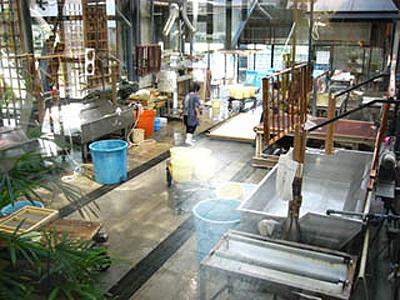|
Ecchu district, which is rich in high-quality water from the foot of the Northern Japanese Alps, has long been a production area of washi paper.
Ecchu washi is tough and flexible, and is used for many products from sliding paper doors and writing paper to paper lanterns, works of calligraphy and paintings, as well as prints and more than 100 kinds of dyed papers.
There is reference to Echhu washi in the Shosoin records, dating to the Nara period. Moreover, the Engishiki records from the Heian period mention that people paid their taxes using washi. Therefore, we can conclude that Ecchu washi has a long history.
Today, around Japan, there are many young people carrying on the traditions of Japanese paper, not only making dyed paper and classical washi using mulberry fiber, but developing new forms of paper handicraft, paper processed goods and souvenirs.
Ecchu washi is tough and flexible, and is used for many products from sliding paper doors and writing paper to paper lanterns, works of calligraphy and paintings, as well as prints and more than 100 kinds of dyed papers.
There is reference to Echhu washi in the Shosoin records, dating to the Nara period. Moreover, the Engishiki records from the Heian period mention that people paid their taxes using washi. Therefore, we can conclude that Ecchu washi has a long history.
Today, around Japan, there are many young people carrying on the traditions of Japanese paper, not only making dyed paper and classical washi using mulberry fiber, but developing new forms of paper handicraft, paper processed goods and souvenirs.
| [+ADDRESS] | 
|














